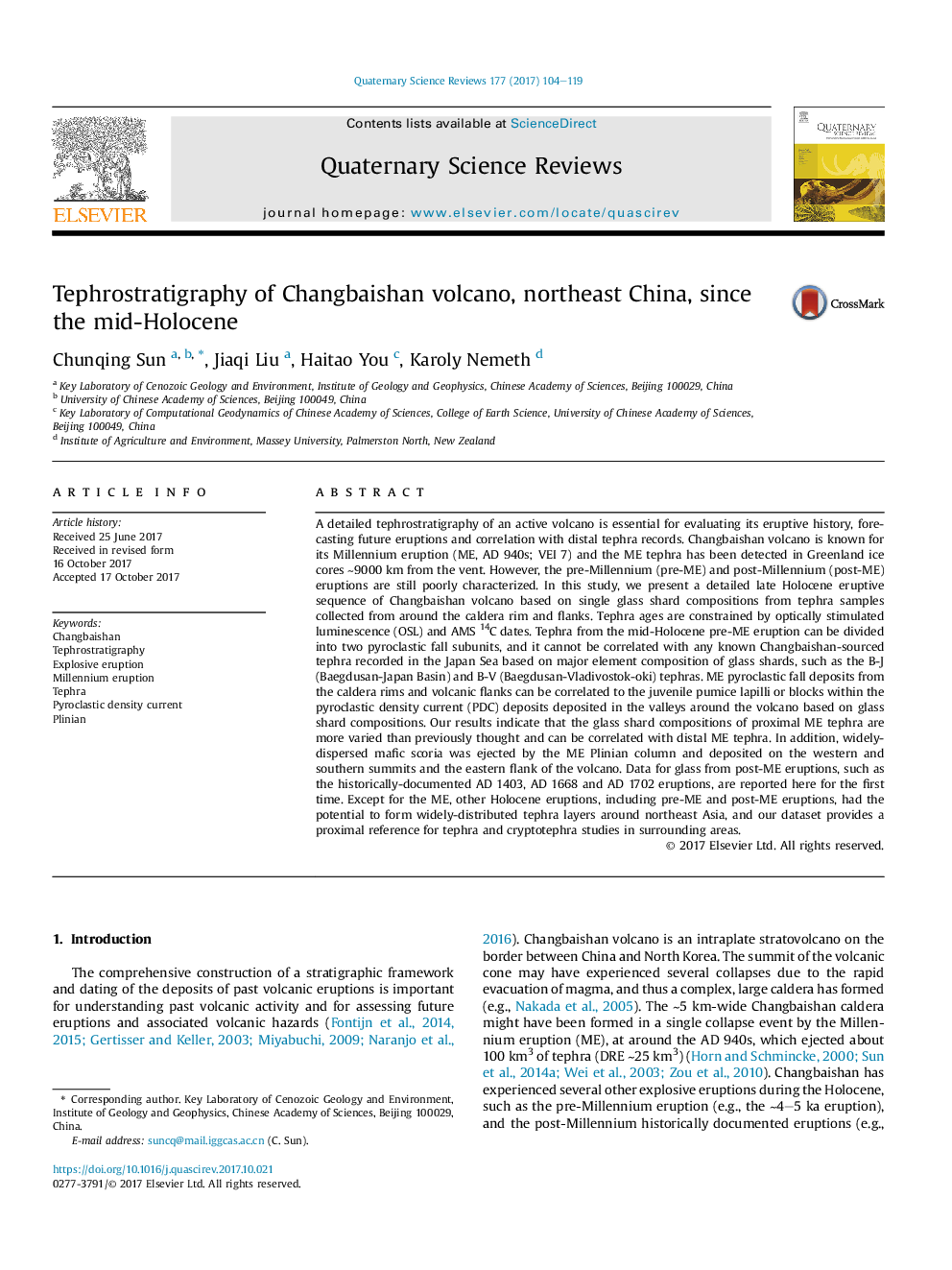| کد مقاله | کد نشریه | سال انتشار | مقاله انگلیسی | نسخه تمام متن |
|---|---|---|---|---|
| 8915089 | 1640758 | 2017 | 16 صفحه PDF | دانلود رایگان |
عنوان انگلیسی مقاله ISI
Tephrostratigraphy of Changbaishan volcano, northeast China, since the mid-Holocene
ترجمه فارسی عنوان
تئوفراستاتوگرافی از آتشفشان چانگبیاشان، شمال شرقی چین، از اواسط هولوسن
دانلود مقاله + سفارش ترجمه
دانلود مقاله ISI انگلیسی
رایگان برای ایرانیان
کلمات کلیدی
موضوعات مرتبط
مهندسی و علوم پایه
علوم زمین و سیارات
زمین شناسی
چکیده انگلیسی
A detailed tephrostratigraphy of an active volcano is essential for evaluating its eruptive history, forecasting future eruptions and correlation with distal tephra records. Changbaishan volcano is known for its Millennium eruption (ME, AD 940s; VEI 7) and the ME tephra has been detected in Greenland ice cores â¼9000Â km from the vent. However, the pre-Millennium (pre-ME) and post-Millennium (post-ME) eruptions are still poorly characterized. In this study, we present a detailed late Holocene eruptive sequence of Changbaishan volcano based on single glass shard compositions from tephra samples collected from around the caldera rim and flanks. Tephra ages are constrained by optically stimulated luminescence (OSL) and AMS 14C dates. Tephra from the mid-Holocene pre-ME eruption can be divided into two pyroclastic fall subunits, and it cannot be correlated with any known Changbaishan-sourced tephra recorded in the Japan Sea based on major element composition of glass shards, such as the B-J (Baegdusan-Japan Basin) and B-V (Baegdusan-Vladivostok-oki) tephras. ME pyroclastic fall deposits from the caldera rims and volcanic flanks can be correlated to the juvenile pumice lapilli or blocks within the pyroclastic density current (PDC) deposits deposited in the valleys around the volcano based on glass shard compositions. Our results indicate that the glass shard compositions of proximal ME tephra are more varied than previously thought and can be correlated with distal ME tephra. In addition, widely-dispersed mafic scoria was ejected by the ME Plinian column and deposited on the western and southern summits and the eastern flank of the volcano. Data for glass from post-ME eruptions, such as the historically-documented AD 1403, AD 1668 and AD 1702 eruptions, are reported here for the first time. Except for the ME, other Holocene eruptions, including pre-ME and post-ME eruptions, had the potential to form widely-distributed tephra layers around northeast Asia, and our dataset provides a proximal reference for tephra and cryptotephra studies in surrounding areas.
ناشر
Database: Elsevier - ScienceDirect (ساینس دایرکت)
Journal: Quaternary Science Reviews - Volume 177, 1 December 2017, Pages 104-119
Journal: Quaternary Science Reviews - Volume 177, 1 December 2017, Pages 104-119
نویسندگان
Chunqing Sun, Jiaqi Liu, Haitao You, Karoly Nemeth,
